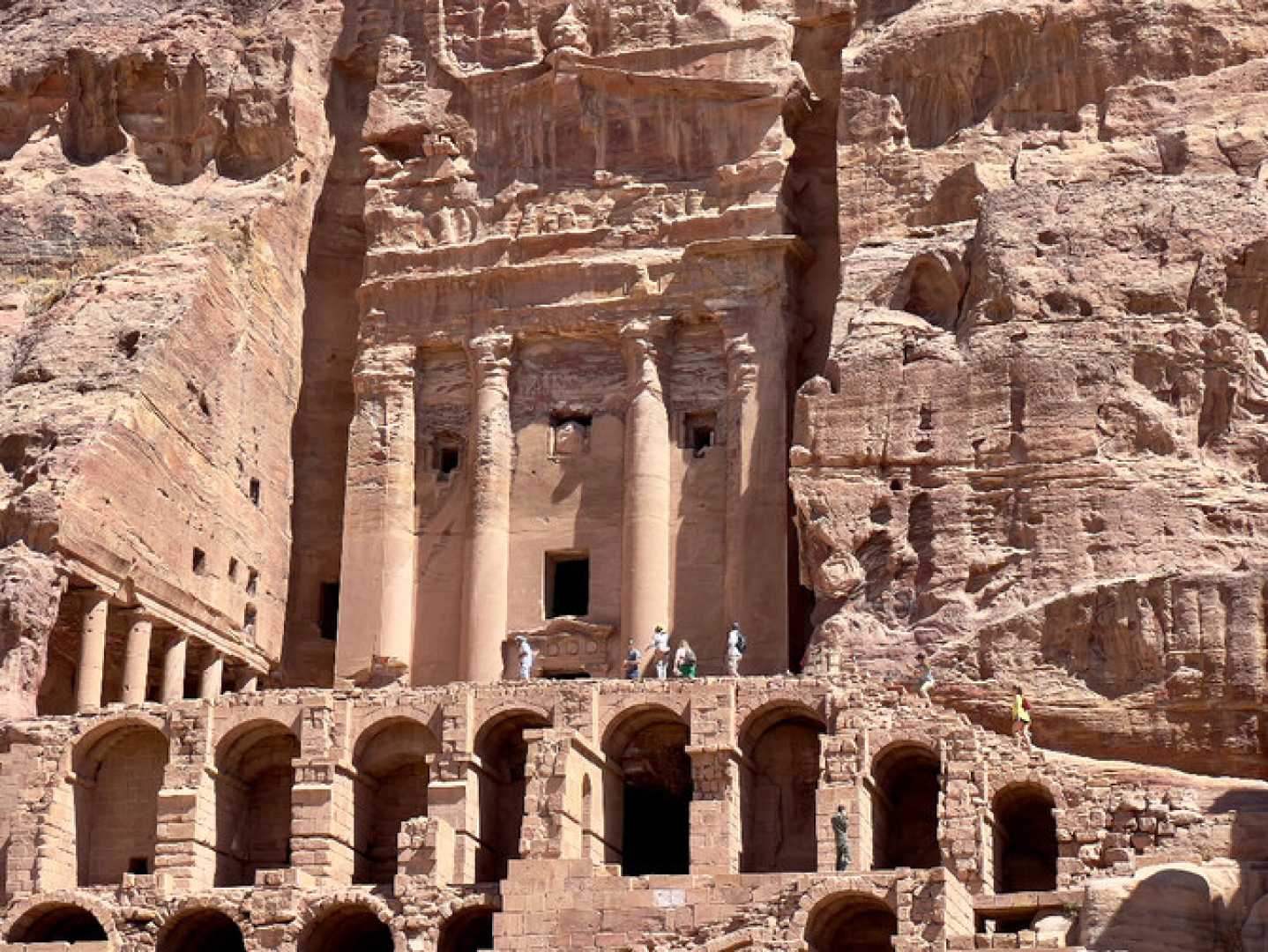News
New Tomb Discovery in Petra Sparks Debate on Nabataean History

Amid much speculation and excitement, a new tomb discovered at the renowned archaeological site of Petra in Jordan has been described as “groundbreaking and historic” by its excavation team. The burial site, located in front of the iconic Khazneh (or Treasury), was found to contain 12 skeletons and numerous grave goods crafted from bronze, iron, and pottery.
Josh Gates, a television presenter who documented the US-Jordanian expedition for Discovery Channel, remarked on the significance of the discovery. He described the find as a potentially transformative insight into the Nabataean civilization, the creators of Petra’s famed architecture. Gates even likened one artefact, the lid of a broken jug, to the Holy Grail featured in “Indiana Jones and the Last Crusade,” which filmed scenes at Petra.
However, excitement surrounding the discovery has been met with skepticism by some experts. Dr. Lucy Wadeson, a University of Edinburgh academic specializing in Nabataean funerary practices, cautioned against overhyping the discovery. She explained that the tomb was already known to the Jordanian Department of Antiquities, who had previously excavated neighboring sites.
Similarly, Dr. Megan Perry, a biological anthropologist from East Carolina University who has excavated many tombs at Petra, critiqued the novelty attributed to the find. Her perspective underscores the rarity of complete and undisturbed burials at Petra, which remain a significant interest for researchers.
The Nabataeans were an Arab tribe whose origins are the subject of ongoing debate among historians. They amassed wealth by controlling trade routes for aromatics like frankincense and myrrh between the Arabian Peninsula and the Mediterranean. At the height of their power, their influence stretched from Damascus to northern Arabia.
The society left behind few written records, with most information about them coming from Greek and Roman writings. While their architectural achievements at Petra, characterized by classical-style facades directly carved into rock, capture the imagination, much about their society remains shrouded in mystery.
Dr. Wadeson highlights that limited inscriptions at Petra have provided clues that women could own property and may have held significant societal roles, a feature less common in contemporary cultures.
Ruler King Aretas IV Philopatris presided over the Nabataeans from approximately 9 BCE to 40 CE, a period during which the community of shepherds transitioned to a wealthy merchant kingdom. This prosperity drew Roman attention, leading to Petra’s annexation into the Roman Empire around 100 CE and its decline thereafter.
Modern techniques, such as ground-penetrating radar initially employed to evaluate flooding risks, inadvertently led to the tomb’s discovery. According to geophysicist Richard Bates of St Andrews, the findings hold the potential to enrich the understanding of Nabataean history and the construction of Petra’s Treasury.
The recent excavation and its implications are featured in a Discovery Channel series, “Expedition Unknown,” drawing global attention to one of history’s enduring archaeological enigmas.












